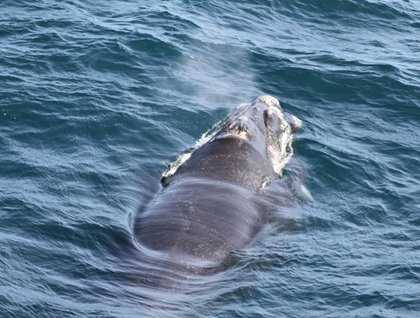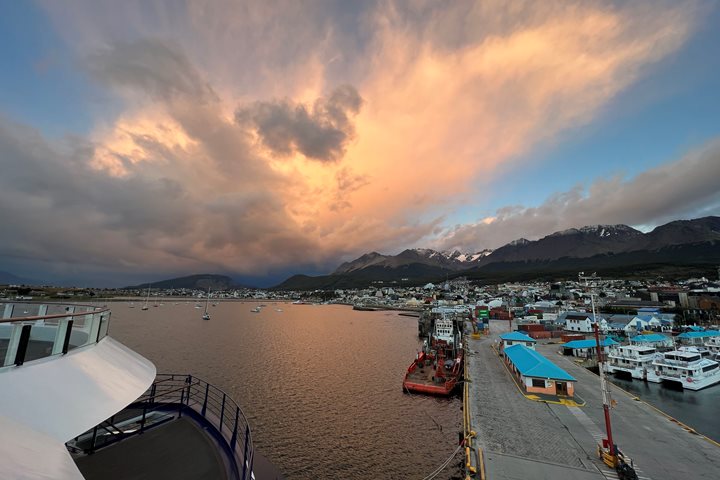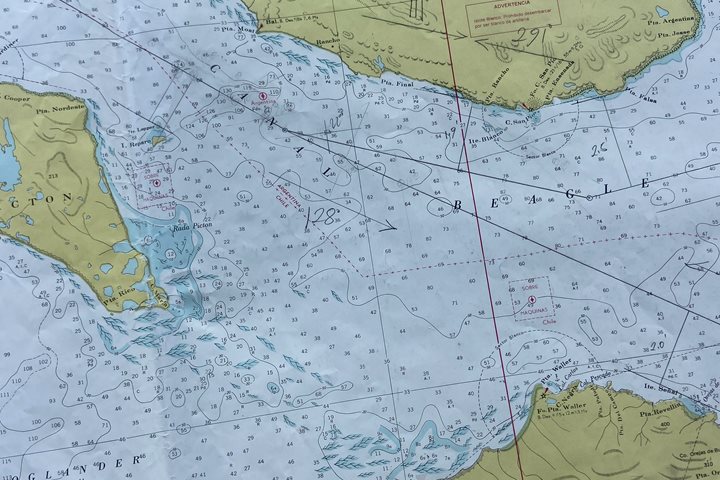We are continuing to make our way towards South Georgia with fair seas and the ever-present seabirds escorting us along the way. It was a great day to spend time on the bridge and back deck watching the magnificent Wandering Albatross and various other seabirds.
Throughout the day we heard several more presentations to learn about the penguins and seals that we hope to see over the next few days. Later in the afternoon the eagle eyes on the bridge spotted a southern right whale! Captain Kruse expertly maneuvered the National Geographic Explorer between the swells so we could have a close look at this large baleen whale.
Right whales acquired their common names because they have thick layers of blubber that could be boiled into oil for heating and lighting during the whaling era. They are also are relatively slow swimmers and float when dead so make the “right” whale to hunt. Whaling began off of South Georgia in the early 1900’s and right whales were hunted in great numbers, over 20,000 individuals in one summer season alone. They were almost hunted to extinction but thankfully after being protected, the population is slowly recovering at about a rate of seven percent a year. It is very exciting to see one of these just make it’s way to the summer feeding grounds off of South Georgia!
We then had a close view of Shag Rocks, a small group of tiny islands jutting out above the Scotia Sea. Shag Rocks gets its name from the colony of South Georgia Blue Eyed Shags (or cormorants) that nest on the steep cliffs of the islands. It was a fantastic site to see so many birds not only nesting there but thousands of small petrels and other seabirds feeding in the upwelling of water swirling crashing in into the rocks. It was a lovely day at sea and the abundance of life in these rich productive waters gives us a taste of what South Georgia can be like.







